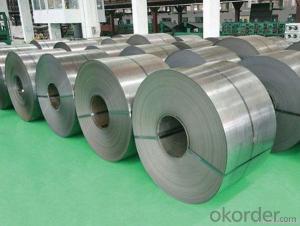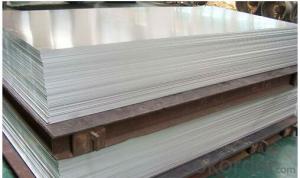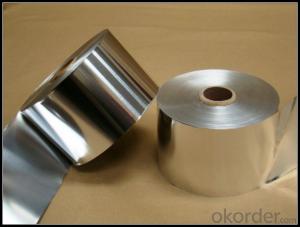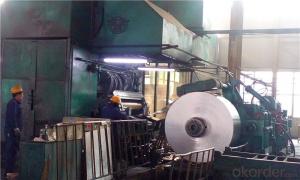3003 H14 Aluminum Plate
3003 H14 Aluminum Plate Related Searches
Aluminum Foil For Roofing Fiberglass Sheets For Roofing Tar Paper For Roofing Alside Pvc Aluminum Trim Coil Pvc Aluminum Coil Flat Aluminum Wire Coil - 5mm Aluminum Wire Coil Best Aluminum Coil 3 4 Aluminum Tubing Coil 1 2 Aluminum Tubing CoilHot Searches
Aluminum Corp Of China Stock Price Of Aluminum Stock Cost Of Heated Floors In Bathroom Aluminum Foil Roll Price Cost Of Evacuated Tube Solar Collectors Types Of Aluminum Plate Texture Of Aluminum Foil 1/2 Inch Aluminum Plate Near Me 1/4 Inch Aluminum Plate Near Me Cost Of 4X8 Sheet Of Plywood Aluminum Foil Roll Supplier Geogrid Roll Price Aluminum Tube Stock Near Me 1100 Aluminum Plate Suppliers Cost Of Plywood Per Square Metre Aluminum Square Stock Near Me Cost Of Mdf Per Square Metre Aluminum Angle Stock Near Me Aluminum Flat Stock Near Me Aluminum Fin Stock Manufacturers3003 H14 Aluminum Plate Supplier & Manufacturer from China
Okorder.com is a professional 3003 H14 Aluminum Plate supplier & manufacturer, offers integrated one-stop services including real-time quoting and online cargo tracking. We are funded by CNBM Group, a Fortune 500 enterprise and the largest 3003 H14 Aluminum Plate firm in China.Hot Products
FAQ
- When it comes to durability, aluminum coils outperform plastic coils. Aluminum is renowned for its strength and ability to resist wear and tear, making it a highly durable material. It can withstand heavy usage without cracking, breaking, or deforming under pressure. In contrast, plastic coils are more susceptible to damage, particularly with repetitive use or extreme temperatures. Although plastic coils may be cost-effective and lightweight, they may not maintain their quality over time. Consequently, for those prioritizing durability, aluminum coils are the superior option due to their longer lifespan and increased resistance to damage.
- Several factors contribute to the increased structural stability provided by aluminum coils. Firstly, the material itself, aluminum, is highly durable and possesses an excellent strength-to-weight ratio. This means that despite being lightweight, aluminum coils offer superior strength and stability, making them an ideal choice for various structural applications. Additionally, the corrosion resistance of aluminum coils is crucial for maintaining structural integrity over time. Unlike other metals, aluminum does not easily rust or deteriorate, even in harsh environmental conditions. This corrosion resistance ensures that the coils will remain structurally sound and reliable for extended periods. Moreover, aluminum coils exhibit high thermal conductivity, allowing for efficient heat transfer. This characteristic is particularly beneficial for structures exposed to temperature variations, as it facilitates the even distribution and dissipation of heat. By doing so, it prevents potential damage caused by thermal expansion or contraction. Another significant advantage of aluminum coils lies in their flexibility. Aluminum is a malleable material that can be easily bent, shaped, and formed into various configurations. This flexibility enables the coils to adapt to different structural requirements, allowing for more intricate designs and enhancing overall stability. Furthermore, aluminum is a non-combustible material, making it a safe choice for structural applications. In the event of a fire, aluminum coils will not contribute to the spread of flames, thus maintaining the integrity of the structure and ensuring the safety of occupants. In conclusion, the durability, corrosion resistance, thermal conductivity, flexibility, and fire-resistant properties of aluminum coils all contribute to increased structural stability. These characteristics make aluminum coils a reliable and efficient choice for a wide range of structural applications, providing long-lasting stability and safety.
- Aluminum coils contribute to architectural design flexibility by offering a lightweight and durable material that can be easily formed into various shapes and sizes. This flexibility allows architects to create unique and innovative designs, including curved or intricate facades, roofs, and cladding systems. Additionally, aluminum coils can be coated in a wide range of colors and finishes, providing architects with endless possibilities to enhance the aesthetics of their designs.
- Aluminum coils can contribute to noise isolation in several ways. Firstly, the use of aluminum as a material for coils provides excellent thermal and electrical conductivity, which helps to dissipate heat and electromagnetic interference. This reduces the chances of noise generated by these factors. Additionally, aluminum coils can be designed with specific properties that enhance noise isolation. By using thicker aluminum wire, the coil can have a higher resistance, reducing the transmission of electrical noise. Furthermore, the shape and size of the coil can be optimized to minimize vibrations and resonance, which are common sources of noise. Furthermore, aluminum coils can be used in conjunction with other noise isolating materials. For example, they can be combined with acoustic foam or other sound-absorbing materials, creating a barrier that prevents sound transmission. The aluminum coil acts as a structural support while the additional materials absorb and dampen sound waves, further enhancing noise isolation. Overall, aluminum coils contribute to noise isolation by dissipating heat and electromagnetic interference, minimizing vibrations and resonance, and providing a structural support for other noise isolating materials.
- The maximum yield strength of aluminum coils can vary depending on the specific alloy and temper of the aluminum. However, in general, aluminum coils typically have a yield strength ranging from 10,000 to 40,000 psi (pounds per square inch). It is important to note that different alloys and tempers of aluminum have different properties and therefore different maximum yield strengths. Additionally, the thickness and width of the aluminum coils can also affect their maximum yield strength. Therefore, it is recommended to consult the manufacturer's specifications or standards for the specific alloy and temper of the aluminum coils to determine their maximum yield strength.
- Metal forming is the process by which aluminum coils are transformed into various shapes and profiles. This involves applying force to the coil to alter its shape and contour. There are multiple techniques employed for shaping aluminum coils, including rolling, bending, extrusion, and stamping. The most commonly used method for shaping aluminum coils is rolling. This entails passing the coil through a series of rollers that gradually change its shape by applying pressure. The rolling process can be carried out either hot or cold, depending on the desired outcome. Hot rolling is typically used for thicker coils, while cold rolling is suitable for thinner ones. Bending is another technique employed to shape aluminum coils, particularly when creating curved or angled profiles. This can be done manually or with the assistance of specialized bending machines. By exerting force, the coil is bent to the desired shape, creating curves or angles as required. Bending is widely utilized in applications such as HVAC systems, automotive components, and construction. Extrusion is a process in which the aluminum coil is forced through a die to achieve a specific cross-sectional shape. The coil is heated and pushed through the die, which determines the final shape of the extrusion. This method is frequently employed to create intricate profiles with consistent dimensions, such as window frames, door frames, and structural components. Stamping is a technique utilized to produce precise shapes and patterns on the surface of aluminum coils. It involves pressing the coil against a die with the desired design, causing the metal to deform and adopt the shape of the die. Stamping is commonly employed for decorative purposes, such as creating patterns, logos, or text on aluminum sheets. In conclusion, various metal forming methods, namely rolling, bending, extrusion, and stamping, enable aluminum coils to be transformed into diverse shapes and profiles. These processes facilitate the customization and versatility of aluminum in numerous industries and applications.
- Due to their advantageous properties, aluminum coils play a crucial role in the production of architectural structures. Their lightweight, strength, and corrosion resistance make them highly valued in the construction industry. Roofing systems in architectural structures commonly utilize aluminum coils. The lightweight nature of aluminum makes installation easy and reduces the overall load on the building. Additionally, aluminum's corrosion resistance ensures that the roofing system remains durable and long-lasting, regardless of weather conditions. Aluminum coils are also employed in the creation of exterior cladding systems. Their ability to be formed into various shapes and sizes allows for the development of unique and visually appealing architectural designs. Furthermore, aluminum's resistance to corrosion and ability to withstand harsh environmental factors make it an ideal choice for cladding systems, guaranteeing the structure's longevity and aesthetics. Windows and doors in architectural structures often incorporate aluminum coils in their production. The lightweight properties of aluminum make handling and installation effortless, while its high strength provides structural integrity to these components. Furthermore, aluminum's corrosion resistance results in long-lasting windows and doors that require minimal maintenance. In summary, aluminum coils are an essential component in the production of architectural structures. Their lightweight, strength, and corrosion resistance make them the preferred choice for roofing, cladding, windows, and doors. By utilizing aluminum coils, architects and builders can create sustainable structures that are durable, aesthetically pleasing, and withstand the test of time.
- There are various packaging options available for aluminum coils to ensure their safety and convenience during transportation and storage. Some common packaging options include: 1. Wooden Crates: Aluminum coils are often packaged in wooden crates, which provide excellent protection against impacts and ensure the coils remain intact during transit. The crates are typically reinforced with steel bands for added strength and stability. 2. Cardboard Boxes: Smaller aluminum coils or coils intended for retail purposes are often packaged in cardboard boxes. These boxes are lightweight, cost-effective, and provide moderate protection against minor impacts. 3. Plastic Wrapping: Aluminum coils can also be wrapped in plastic film, which helps protect them from moisture, dust, and scratches. This packaging option is commonly used for coils that are transported in bulk or in situations where additional packaging is not required. 4. Metal or Composite Tubes: In some cases, aluminum coils are packaged in metal or composite tubes. These tubes are sturdy and provide excellent protection against external forces. They are often used for coils with large diameters or longer lengths. 5. Customized Packaging: Depending on the specific requirements of the customer or industry, customized packaging options can be designed. This may include the use of foam or cushioning materials to provide additional protection, or the incorporation of specialized features such as moisture-resistant barriers. It is important to choose packaging options that best suit the specific needs of the aluminum coils, considering factors such as coil size, weight, transportation conditions, and storage requirements.














































